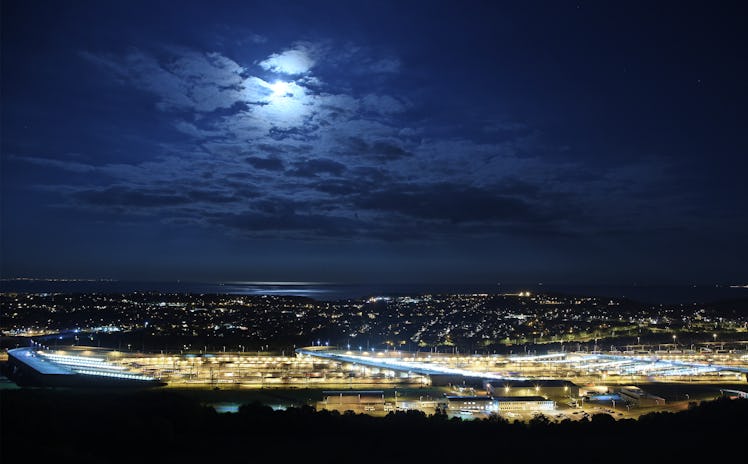
A Super Blue Blood Moon Is Coming & Here's What You Need To Know
Dang, 2018. If you've been following the sky events so far this year, you can definitely conclude that 2018 is showing out and outshining 2017 in just the first month of it being here. January is awarding us with another celestial event, and it might be challenging to remember all that you've seen so far. To know how to see the Super Blue Blood Moon that's coming up soon, you should get the details on what the term entails.
I personally find it interesting that we grew up thinking that the moon we learned about and built in our solar system projects has many identities, depending on it's placement. The moon is pretty mysterious in that way, and 2018 is showing us a few different ways it can be classified. If that is not a good sign for this year, then I don't know what is.
If you recall, on New Year's Day we experienced the Wolf Moon, which was a supermoon. Seriously, I cannot get enough of these epic names for the moon. Now, to get a better idea of what the upcoming, jam-packed Super Blue Blood Moon is, you sort of have to break its occurrence down in parts.
What is a Super Blue Blood Moon?
For starters, a Blue Moon is when a full moon occurs twice in the same month. The first full moon was on Jan. 1, and this other full moon will be on Jan. 31. How cool is it that we were able to see the moon do its thing in the beginning and now at the end of January?
So, what's so "super" about this particular phase of the moon? Well, on Jan. 31, the moon will technically be a supermoon that also syncs up with a lunar eclipse. A supermoon happens when the moon is closest to us, and a lunar eclipse occurs when the moon makes its way through the shadow of the Earth. Sounds creepy, huh?
Last but certainly not least, the moon takes on a reddish hue when it is totally eclipsed (aka, when it passes through the dark part of the Earth's shadow). And that, my friends, is called a Blood Moon.
So, once you break down everything that will occur with the moon, you get a Super Blue Blood Moon. Keep in mind, the "blue" portion of the name of this event has more to do with the fact that there are two full moons in the same month. Nothing is going to be blue, per say, unless you've got a stellar view of the ocean or a Blue Man Group show.
How can you see it?
If you want to get technical, not everyone will see this event at the end of January. Some will see it Feb. 1. This has a lot to do with time zones, but it's still close enough to acknowledge the immense amount of activity going on with the moon. The lunar eclipse is what sky viewers want to look out for. Lunar eclipses can be seen from just about anywhere as long as it is nighttime. This may be a bit of a challenge for this particular lunar eclipse though, because the show starts near moonrise or moonset.
In New York City, the eclipse getting dark and red can be noticed at 6:48 a.m., but then the moon will set 16 minutes later. For people in California, the total phase will begin at 4:51 a.m. and wrap up at 5:29 a.m. Places like Hawaii and Alaska will be lucky enough to view the whole lunar eclipse play out from start to finish.
Blue Moons aren't as rare as you think, but all of these events with the moon can sure have you feeling like you're witnessing something unique. 2018 is alright in my book, so far.